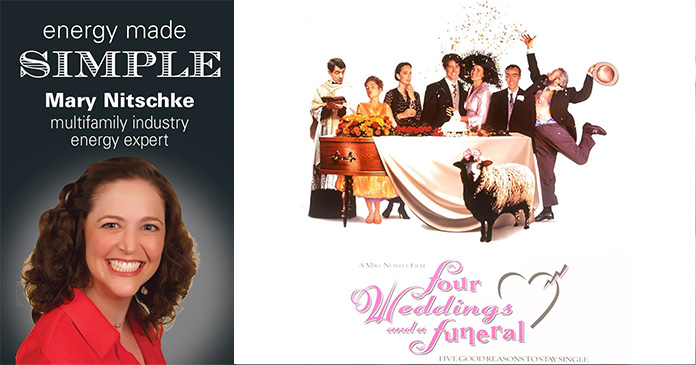Instead, she got a big dose of something new: happiness coaching. Keynote speaker Shawn Achor—a former Harvard University researcher and former co-teacher of one of the university’s most popular courses, Positive Psychology—extolled 90 listening employees to shake off dark moods at work by practicing such happiness-inducing techniques as meditation or expressing gratitude.
To her surprise, Rivera says, she drove home filled with thoughts about cheering up; “if I assume a negative attitude and complain all the time, whoever is working with me is going to feel the same way.”
Happiness coaching is seeping into the workplace. A growing number of employers, including UBS, American Express, KPMG and the law firm Goodwin Procter, have hired trainers who draw on psychological research, ancient religious traditions or both to inspire workers to take a more positive attitude—or at least a neutral one. Happiness-at-work coaching is the theme of a crop of new business books and a growing number of MBA-school courses.
Critics say that pushing positive thinking is just a way for companies to improve morale while they continue to burden employees with the threat of layoffs and an ever-increasing workload. Barbara Ehrenreich’s recent book, Bright-sided, blames “positive thinking” for enabling people to avoid confronting a wide range of serious problems in the economy and workplace.
Still, there’s no doubt that workers could use a little cheering up. Employee satisfaction has hit the lowest level in the 22-year history of the conference board’s annual survey on the topic. Only 45 percent of U.S. workers are satisfied with their jobs, down from 52 percent in 2005 and 61 percent in 1987, says this 5,000-household study. Achor describes one employee audience he encountered at a big banking concern as “ashen-faced and anxious.”
Research shows that employees’ positive attitudes can be good for business, too. A 2004 study of 60 business teams in the journal American Behavioral Scientist found teams with buoyant moods who encouraged each earned higher profit and better customer-satisfaction ratings. A 2001 study at the University of Michigan says people who are experiencing joy or contentment are able to think more broadly and creatively, accepting a wider variety of possible actions, than people with negative emotions. And a 2005 research survey in the Psychological Bulletin shows happier people miss work less often and receive more positive evaluations from bosses.
Of courses, coaches have long tried to instill proactive skills to help clients extract career or personal success from tough situations. What’s different now is the emphasis on inner happiness, and controlling your own mood in the face of turbulence or misfortune.
Indeed, the happiness coaches go beyond traditional positive-thinking approaches, taking new tacks that tend to ring true with workers. Some examples: Write emails to your co-workers every day thanking them for something they have done. Meditate daily to clear your mind. Do something for somebody without expecting anything in return. Write in a journal about things you are thankful for; look for traits you admire in people and compliment them. Focus on the process of your work, which you can control, rather than outcomes, which you can’t. And don’t immediately label events good or bad, but remain open to potentially positive outcomes of even the most seemingly negative events.
Achor bases his training on a burgeoning body of research on the positive psychology movement, which emphasizes instilling resiliency and positive attitudes over analyzing mental illness and dysfunction. Srikumar Rao, a Long Island University emeritus professor whose training courses in workplaces and business schools have earned him the nickname “the happiness guru,” draws on tenets common to such religious traditions as Hinduism, Sufism, Buddhism, Christianity and Judaism.
People who use the principles say they work. Greg Johnson, a Charlotte, N.C., corporate real-estate executive, says Rao’s training helps him avoid rushing to negative conclusions about daily events. Amid staff changes or reorganizations, he has taught himself to think, “Good thing, bad thing? The reality is, I don’t know” how the change will turn out in the long term. That mindset helps him remain open to the possibility that seemingly negative events can produce positive outcomes in the long term, he says.
Andrew Potter, CEO of National Car Parks, London, says a tenet he learned from Rao to focus on work processes, rather than outcomes you can’t control, helped him manage his company’s recent bid for a big contract. His employees felt intense pressure to wrest the contract away from a competitor. But instead of “talking to the team about how great it would be if we win it,” Potter says, he asked them, “What more should we be doing” to prepare?
His company didn’t win the contract, but “We had 20 minutes of grumbling,” then everyone bounced back, he says. When the next bidding opportunity rolled around, “we walked in with confidence and we won it.” Rao’s training is “very, very practical in the fiercest corporate battle,” he says; he plans to enroll several of his executives.
In Marshall Goldsmith’s new book, Mojo, the respected executive coach emphasizes finding “a positive spirit toward what we are doing now, that starts from the inside,” he says. Many companies are trying “to increase employee satisfaction by asking themselves, ‘What can we do to make the employee’s job more meaningful? How can we make employees happier?'” Goldsmith says. “My approach is quite different, in having employees ask themselves, ‘What can I do to make my work more meaningful? What can I do to make myself happier?'”
Author: Sue Shellenbarger, wsj.com
















